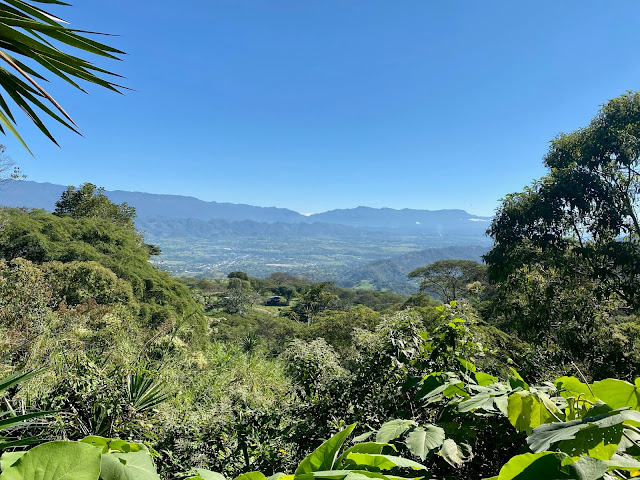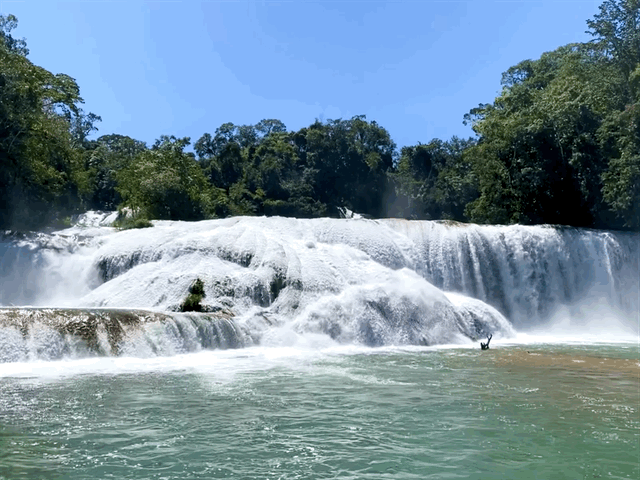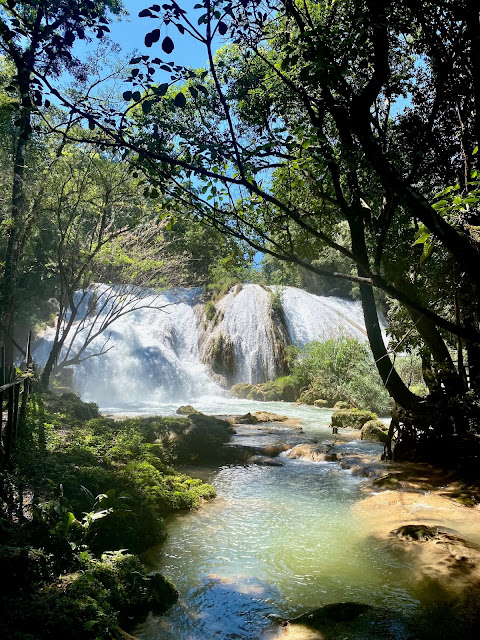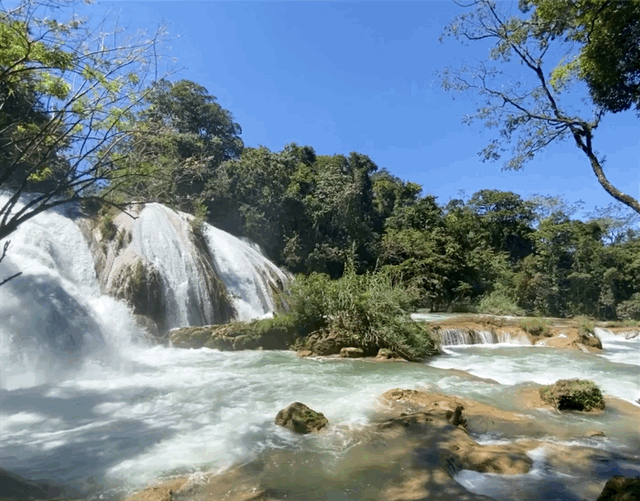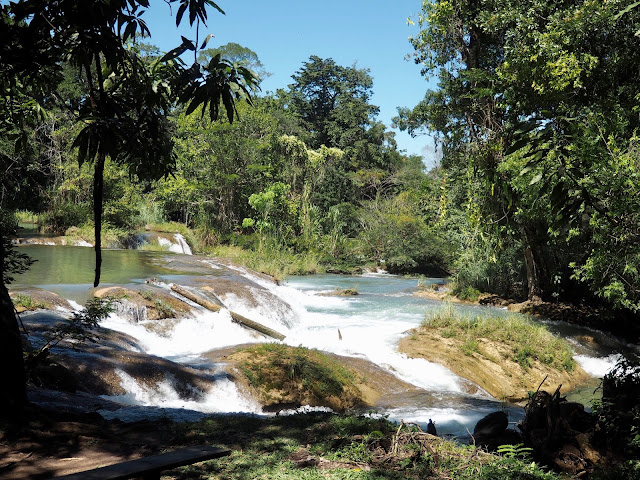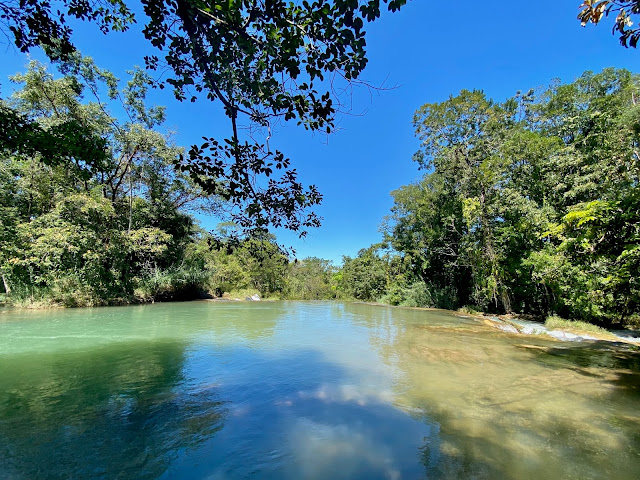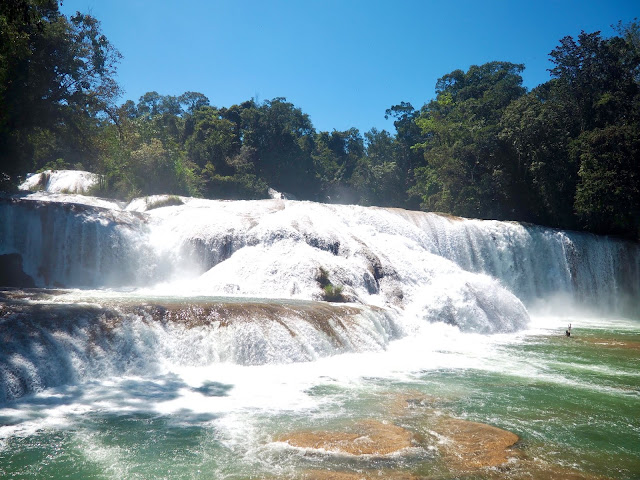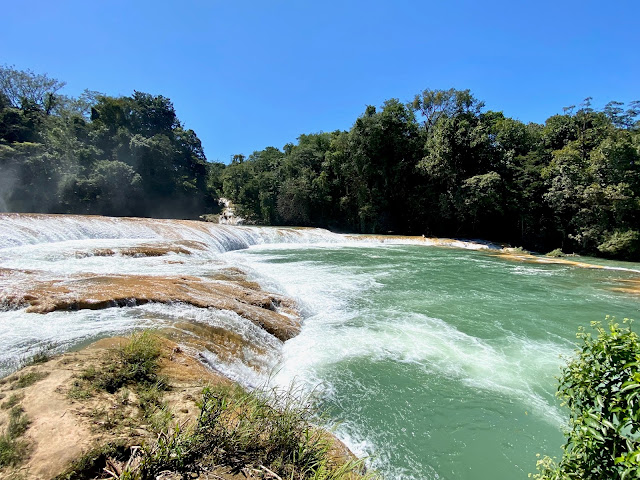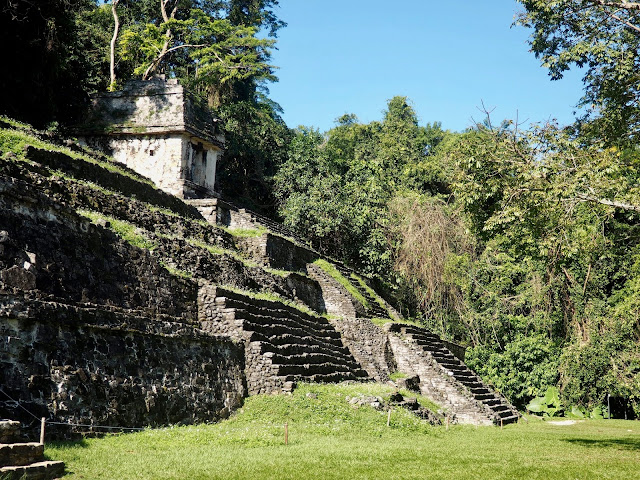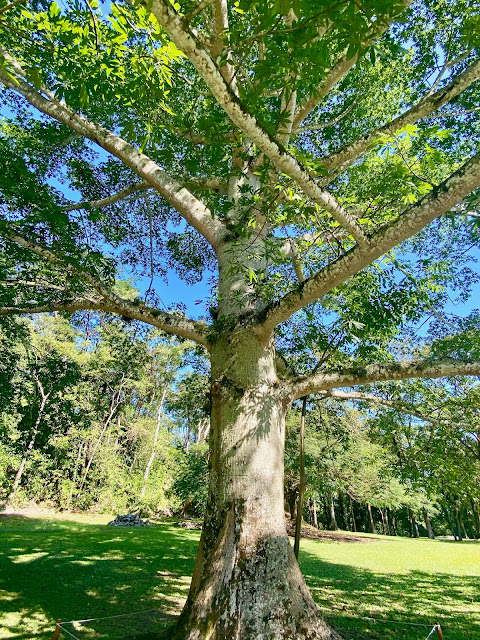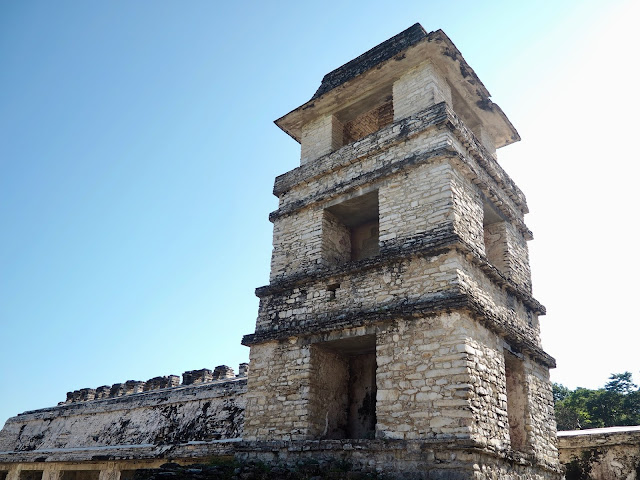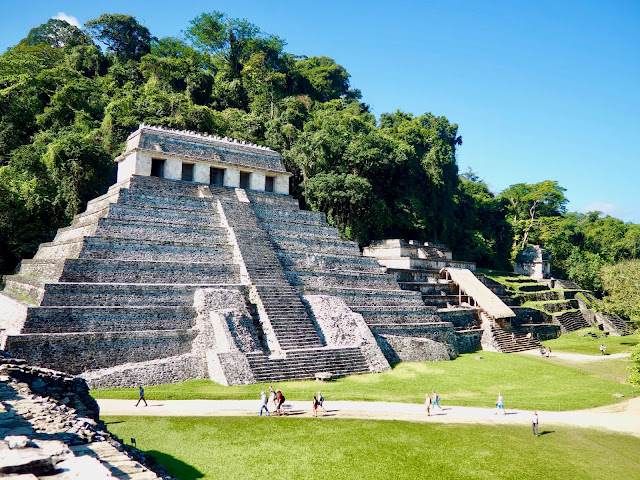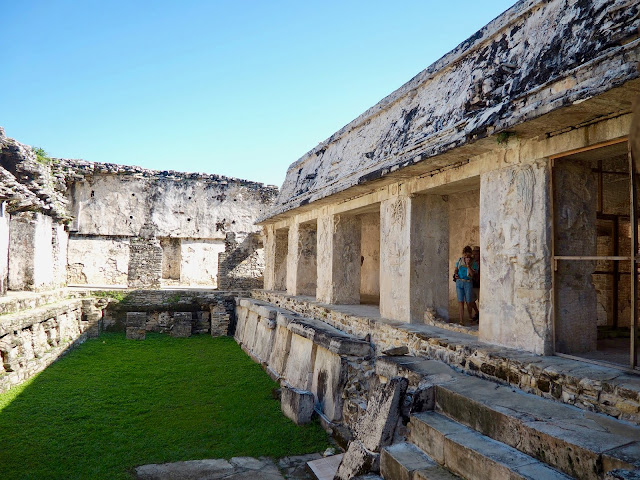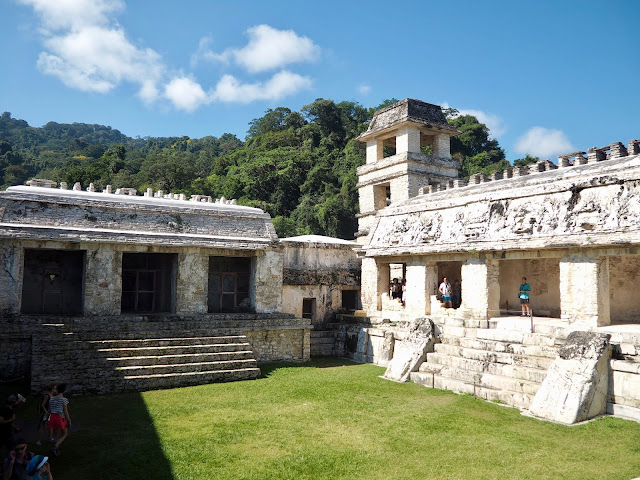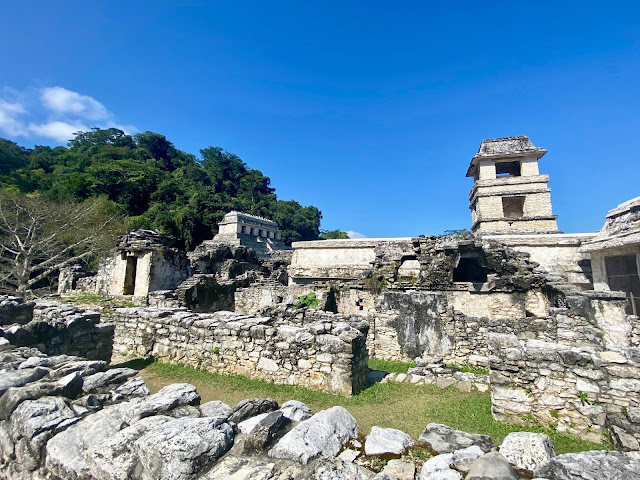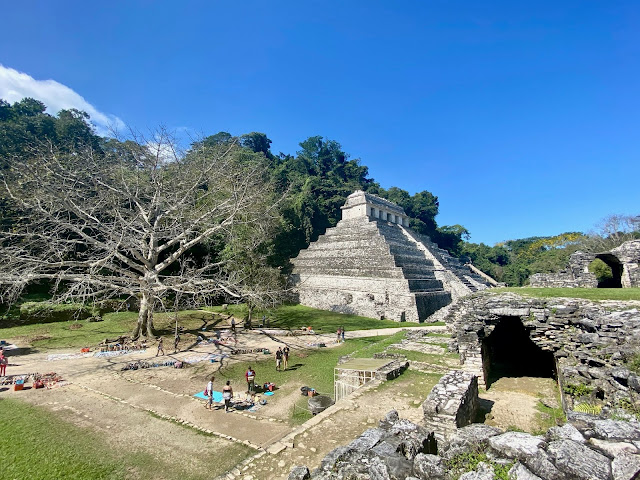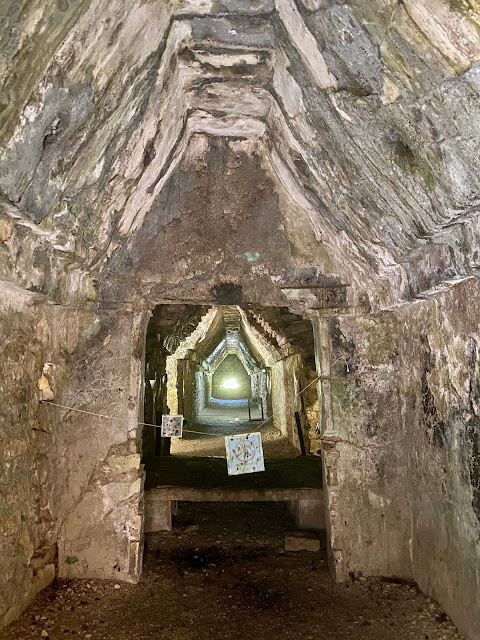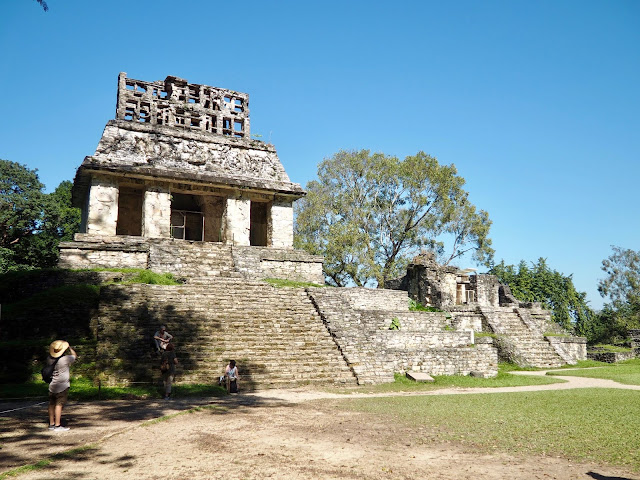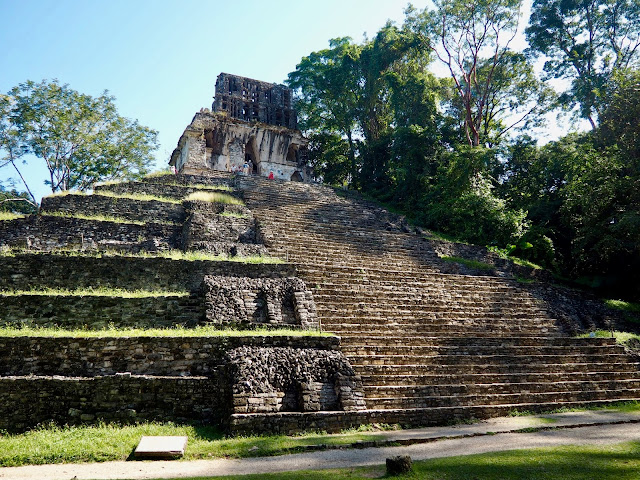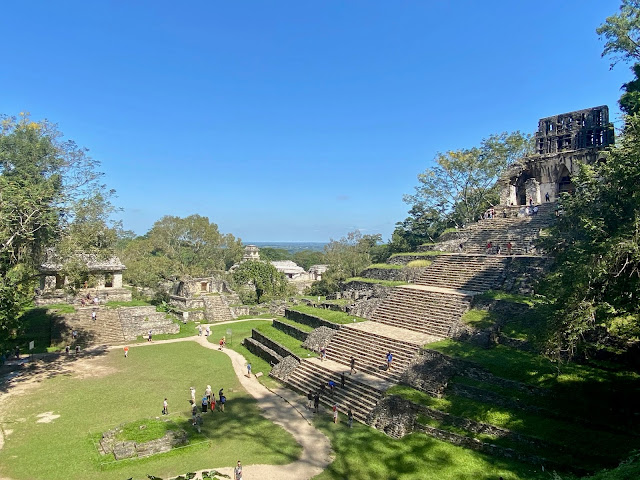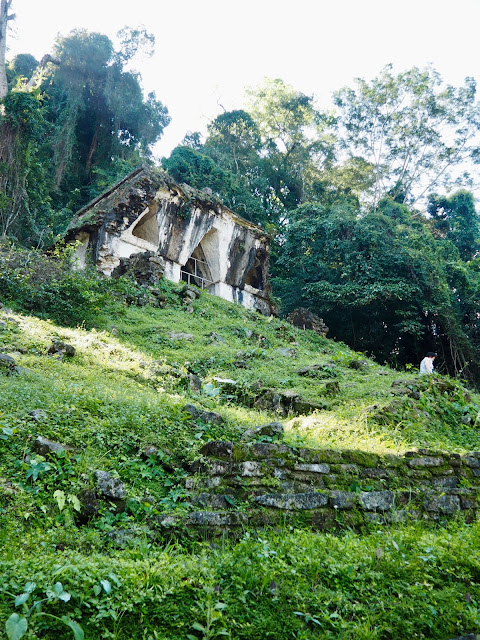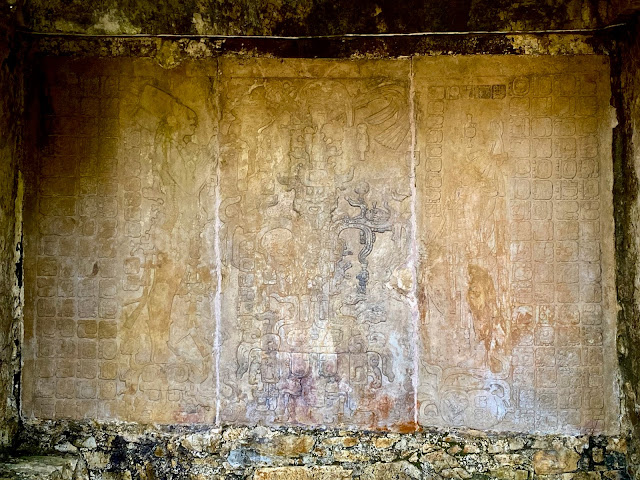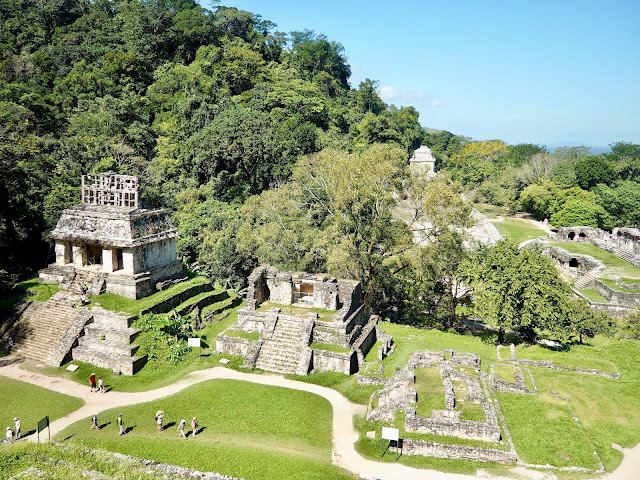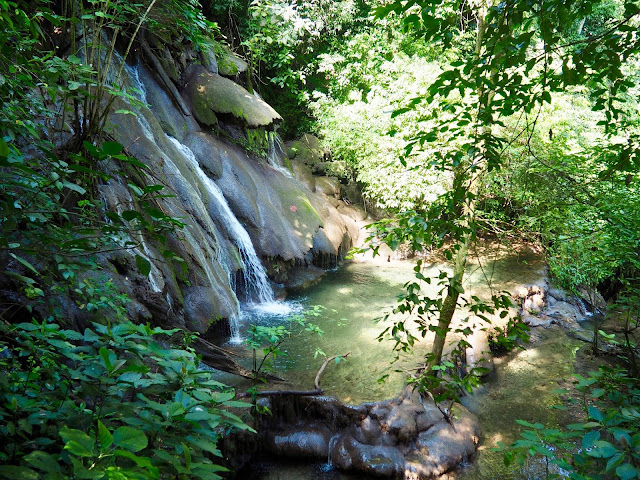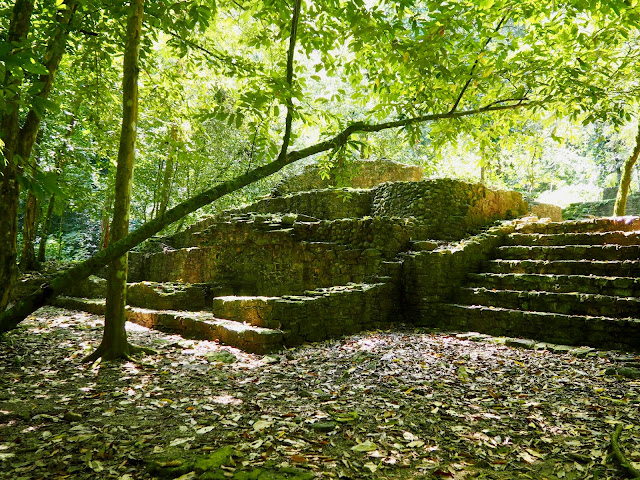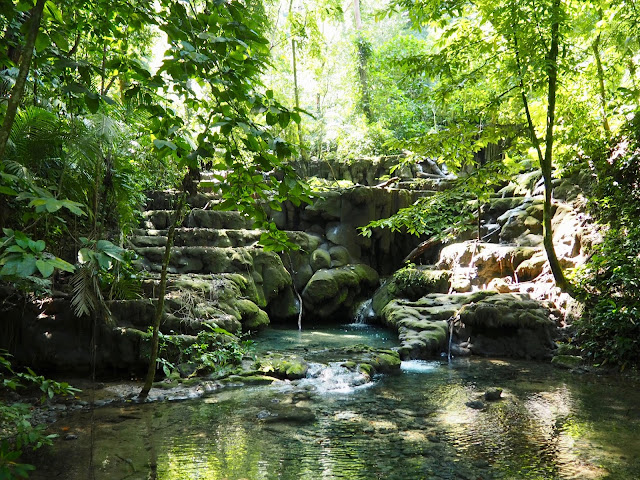
Palenque | Mexico
To put it bluntly, Palenque is a pain in the arse to get to. It’s a long drive from whichever other location you’re coming from. This post cover two days out of our trip, and at least half of each day was given over to driving to and from Palenque. So why bother going? The pyramids. They’re located a short drive out of the town itself, tucked away in the tropical jungles, and are magnificent examples of an ancient Maya city state. We only stayed one night in Palenque town, as there’s nothing else there to see, but we did make some stops on the way there, to break up such long driving days.
Day One
Driving Through Chiapas
We departed San Cristobal de las Casas early in the morning. There was actually the chance that we could have departed even earlier, as the area is notoriously politically unstable. On occasion, the locals will block off sections of road, so leaving in the wee hours of the morning is the safest way to avoid this possibility. Luckily for us, Intrepid monitor the situation and it was highly unlikely that would happen on our departure day, so we got a couple of extra hours in bed!
It’s still best to leave fairly early anyway, as it’s a long drive out of the Chiapas Highlands, down through the winding roads. We were leaving the cool mountain air in exchange for tropical humidity, as we continued further south through Mexico. In all honesty, I slept through most of this drive somehow, so I didn’t see too much of the scenery! I could imagine based on the previous day though. We did stop a couple of hours in for breakfast, on a terrace overlooking a stunning view, situated above the jungle canopy, with greenery unfolding in front of us for miles.
Agua Azul Waterfall
A couple more hours further into the drive after that, we stopped for our main activity of the day, a visit to Agua Azul waterfall. The name translates as ‘blue water’, and I think it’s pretty obvious why from these photos! We’d seen this advertised in a few places as a day trip from San Cristobal de las Casas, but it definitely makes for a convenient break on the drive to Palenque, if that’s in your itinerary. Given those adverts, we expected it to be busier than it was, so we were pleasantly surprised to not run into too many other tourists there.
The van dropped us off in a dusty carpark surrounded by forest, with plenty of souvenir and snack stalls around. We changed into swimwear there before following the path between the stalls to find the waterfall itself. The main falls are the first you come to, at the bottom of the hill, where a wide cascade of white foam tumbles over a small cliff into the bright blue waters of the river below. It was a beautiful view in the bright sunshine, and remarkably peaceful, even with the sound of all that rushing water.
Exploring the Falls
We took a few photos there, before continuing up the wooden walkway to the rest of the falls. It’s actually a whole series of small cascades and plunge pools scattered up the hillside, water dancing in the dappled sunlight filtering in through the green jungle foliage. After all those desert and mountain landscapes from the first half of the trip, this definitely felt different, surrounded by all this lush greenery and the tropical humidity in the air. I’ve been to a various jungle waterfalls on previous trips, from Central America to Asia, and they’re always a favourite of mine, so serene and untouched. This one perhaps a little less so, with all the vendors on the other side of the walkway!
At the top of it all, was a large, wide pool where we able to go swimming. After looking at that stunning blue water all the way up, I was eager to get in! As it’s at the top of the falls, in the river, there’s a fairly strong current in places, but there were a couple of ropes strung across if you got tired of swimming against it all the time. I did get in a bit of strengthening practice at first, swimming up to the further of the two ropes, pushing through the current, before hopping on to one of them to just relax in the sunshine.
Palenque Town
We stayed in the water for as long as we had time for, before getting dried and changed and returning to the van to continue the drive to Palenque. We arrived there around mid-afternoon, and after checking into the hotel, went for a brief walk through the town. As I mentioned, there’s not a huge amount to see here – first was a tree-lined street full of restaurants, then over a bridge covered in lizards climbing over it, we reached the town centre, with all its shops and roads of traffic.
The thing that was kind of interesting about this is where other historic city centres we’d seen on this trip clearly had a lot of places catering to tourists, this was very much a local town. Bar a few souvenir places, these were the sorts of shops that most people use in their day to day lives, that you would find in any town around the world. So although it wasn’t that interesting from a tourist perspective, it did give you an idea of what a typical town looks like for Mexican locals, away from the hotels and restaurants.
A Relaxing Afternoon
We wandered back to one of those restaurants for lunch, where we tried yuca (amongst other things), which is a type of vegetable popular in this part of the world, also known as cassava, and often fried or mashed – I find it like a cross between turnip and potato. I’m pretty sure I tried it last time I was in Central America as well, though that was many years ago. We headed back to the hotel, stopping for some snacks in the supermarket next door first. As we’d had a big, late lunch, we weren’t going to have much for dinner.
The hotel here had a swimming pool, the first we’d encountered on the trip so far, though we soon learned that every hotel from this point on would have one, as it just gets so hot and humid in this part of the country that it’s really a necessity. Cintia and I went for a dip, then had a very relaxed evening, with some Netflix time and a couple of drinks. To be honest, I had many an early night on this trip, compared to my usual standards, but our days were so long and jam-packed that I was usually floored by 9-10pm anyways!
Day Two
Arriving at Palenque Ruins
The second morning was devoted to the real reason we’d come to this sleepy little town, to see the Palenque pyramids. It was a short drive there from the town, out into the thick jungle foliage. We were well into the Maya region of Mexico now. Combined with the climate, this meant that Palenque reminded me plenty of the Maya sites I visited last time I was in this part of the world, such as Tikal and Copán.
The Classic Maya period is also a lot more recent than some of the sites we saw earlier in the trip. Like many Maya city states, Palenque reached its apex around the 7th century AD, before the mysterious collapse of the Maya Empire, for reasons still unknown, at the turn of the 9th century. At that time, many of these cities were abandoned as the Maya moved to new, smaller cities. The buildings were lost to the jungles for centuries, before being rediscovered by archaeologists. The site is by no means the largest we’d seen on this trip so far (at least what’s been uncovered anyway), so all the main pyramids and palaces are close together in a clearing amidst the jungle.
Pakal the Great
We had a guide for our visit as well, to learn a little more about the history of the place and what each structure was used for. In all honesty, I have forgotten a good chunk of it, though I did keep a diary throughout the trip. But overall, I’m a visual learner and a reader, so I take in more that way than if someone just tells it to me. Ironic, when I earn a living as a guide telling people things!
The best preserved pyramid is the first as you enter, the Temple of the Inscriptions. It’s named for the intricate glyphs, which recount the events of the Late Classic Period. This pyramid served as the tomb of Pakal the Great (K’inich Janaab’ Pakal), Palenque’s most significant ruler. His body was found covered in ornate jade decorations – which we quickly realised we had seen in the Anthropology Museum back in Mexico City. Most of the city’s central complex, including the Palace, was built during his reign, though his sons oversaw the completion of his tomb. You can’t climb or enter this one, but next to it is the tomb of the Red Queen (whose identity is unknown, possibly Pakal’s wife), where you can enter to see the red painted walls around her resting place.
Ceiba Tree
We stopped in the clearing here to look at a ceiba tree, sacred to the Maya. It’s a prominent feature in the Maya Cross, seen on many of their decorations and artefacts and such. The branches grow at right angles, representing the four cardinal compass points. When shown as the Maya Cross, the side branches have the sun and moon on either side, while the branches lead to the upper world and the roots to the underworld. Humans live in the middle world, and these three levels are crucial to the Maya religion, along with the movements of celestial bodies.
The Palace
Next to here was the Palace, which lies partially in ruins, but is intact enough to venture up and inside of it. This does feel like stepping back in time a little, as you move through different rooms, halls, and courtyards, seeing where people once lived and worked. The Palace would have functioned as an administrative centre for the city, where the upper classes met for functions and rituals, but also for entertainment too!
Our guide told us a lot about the wider Maya world at this point as well, explaining that is was not one unified empire, but rather a series of independent city states. They would war with each other, capturing and killing prisoners. The size of the Maya world though was staggering, and had they ever managed to unify, they would almost certainly have withstood the Spanish conquest! The buildings here also had many carvings still intact, with all sorts of figures and symbols still visible.
There’s an unusual sort of observation tower in the centre of the structure, and an aqueduct running alongside, which served the baths and saunas inside. There were even underground bedrooms hidden in the hillside. One of the most impressive features are the long corridors with their high, vaulted ceilings. These were built so that if one wall collapsed, the other would remain standing. An ingenious feature for a region prone to earthquakes!
Temples of the Sun, Cross and Foliated Cross
Across the aqueduct we came to the three pyramids grouped together. The smallest, the Temple of the Sun. The largest in the whole complex, the Temple of the Cross. And still half buried in the hillside, the Temple of the Foliated Cross. The latter are named because of their Maya Cross carvings located in the temples at the top of each pyramid. K’inich Kan B’ahlum, the son of Pakal the Great, built them at the end of the 7th century. Our tour finished here, with an explanation of the Maya number system, which is relatively straightforward once you get the hang of it. It sounded familiar, so I’ve definitely read or heard about it before, but would have forgotten without the reminder!
We then had enough time to explore the pyramids ourselves, and Cintia and I started with the massive climb up the Temple of the Cross. As well as the Maya Cross carving, this also offers excellent views over the rest of Palenque, with all the buildings we’d already visited now visible from above. We ventured up the Temple of the Foliated Cross as well, which was unusual in its half-buried condition, and the steps were more like a winding path up to the top.
Through the Jungle
We met up with the rest of the group again to leave the complex, but rather than leaving the way we’d entered, we took an alternate path through the jungle instead. The archaeological site is located inside a national park, so all the flora and fauna are protected. This was fun, as you felt so far from civilisation, only seeing a few other people along the way.
We wandered past more ruins, of smaller buildings that haven’t been properly excavated yet, buried in the lush jungle foliage. We crossed a river on a wooden hanging bridge, leading past a small waterfall, which looked so idyllic in the dappled sunlight. I was rather disappointed by the no swimming signs! And although we didn’t see much wildlife, we certainly heard it, as there were howler monkeys screeching somewhere in the forest. Their cries are so loud and very distinctive – if you think you’ve never heard them before, you actually probably have, as they were used as the dinosaur cries in Jurassic Park! I remember vividly hearing these cries at the crack of dawn in Tikal on my last Central America trip too.
Leaving Palenque
The walk only took fifteen minutes or so, and we exited the archaeological site from there to hop back into the van. The rest of the day was spent on the road to our next destination, Merida, and it’s a long, straight highway cutting through Yucatan state. We caught a glimpse of the sea, the Gulf of Mexico, at one point, but otherwise it’s a fairly unexciting stretch of road.
We arrived in Merida late at night, and had a quick bite to eat before bed, but I think we were all pretty exhausted from two long travel days! Breaking them up with the waterfall on the first day, and keeping the pyramids for the second day was definitely a good way of doing it though. So yes, Palenque is far away and in a somewhat inconvenient location, with little to do besides the pyramids. But they are absolutely worth seeing, certainly some of my favourites from the whole trip!
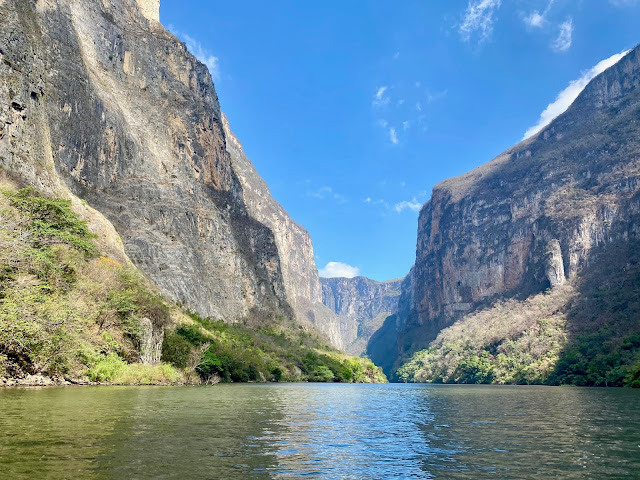
San Cristobal de las Casas | Mexico

Merida | Mexico
You May Also Like
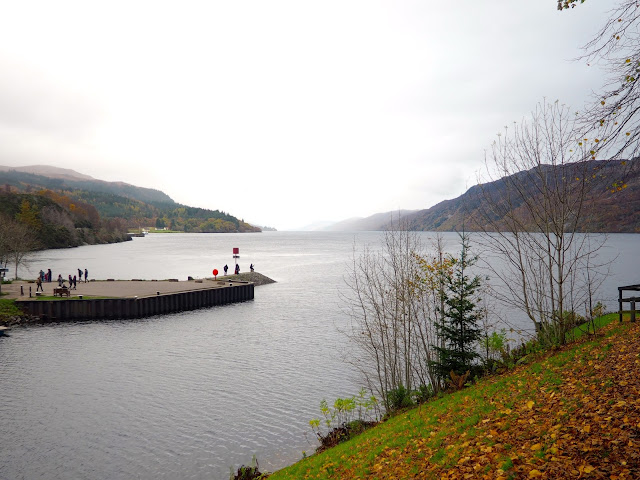
Loch Ness Day Trip
11 November 2017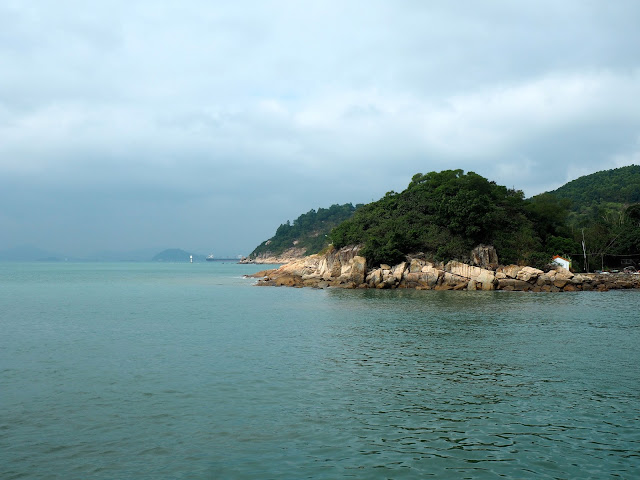
Day Out to Lamma Island
14 November 2015
